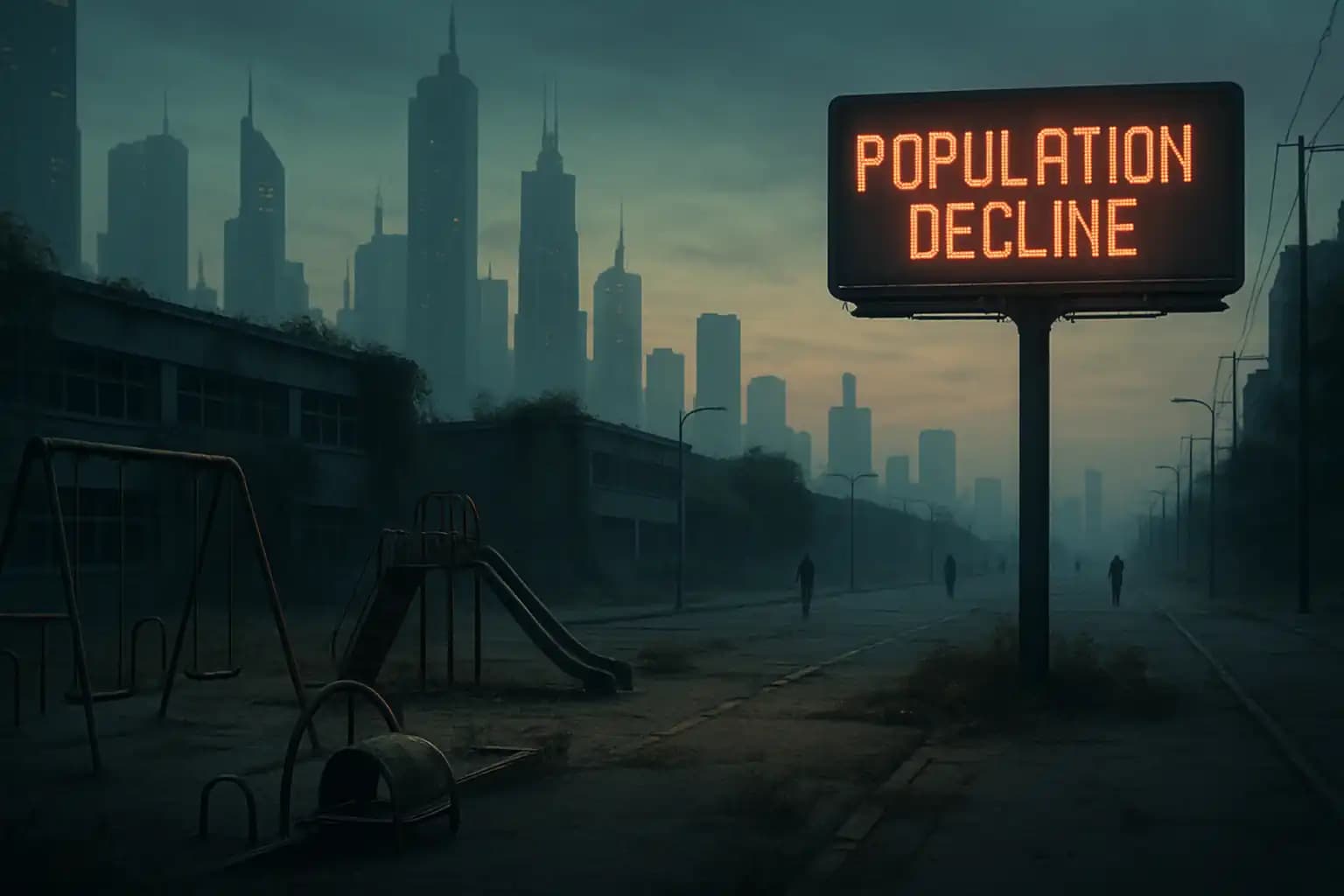Forget the sci-fi spectacle of people disappearing in a flash. The real vanishing act stems from social shifts, economic anxiety, and demographics that would alarm any doomsday-prepper. Alarm bells ring from Japan to Latvia, but this isn’t ancient curse or a single catastrophic event. The modern population crisis creeps across continents, revealing how billions of decisions have led to empty cradles, shuttered schools, and a stark future.
The once-unstoppable world population boom has lost momentum. After centuries of slow growth, the last two hundred years saw wild acceleration, only to hit the brakes in recent decades. Prosperity, urbanization, and women’s empowerment all work together to lower birth rates. Now, we face not too many mouths to feed, but shrinking societies. The consequences—economic, social, and environmental—are staggering. Societies scramble to adapt to avoid a self-induced civilization reset (see this analysis).
Demographic Transition: From Growth to Decline
To understand the vanishing, examine the demographic transition. As countries industrialize, both birth and death rates fall. Birth rates often plunge faster and earlier, pushing populations below the replacement level. In 23 nations, including Japan and much of Eastern Europe, deaths now outnumber births annually (according to World Population Review). Economic prosperity, better medicine, and higher education rates among women play major roles. Lower infant mortality leads to fewer children, while the cost of urban life and career aspirations further nudge birth rates downwards. Social values shift too; the traditional big family dream gives way to two-income households weighed down by debt (see this anomaly report).
Global Hotspots: Where Humans Are Disappearing Fastest
This issue isn’t merely a first-world problem. The map of shrinking populations extends around the globe. Nations like South Korea, Romania, Greece, Latvia, and China face unprecedented declines; indeed, China’s population peaked and is now declining. The reasons vary: Latvia, Lithuania, and other Baltic states suffer losses from both negative birth rates and mass emigration. Japan’s aging population and reluctance to embrace immigration contribute to a 0.5% annual contraction. Even the United States relies on immigration for recent modest growth; native births alone can’t sustain it (see this interactive map).
These trends appear in unusual places—stories of empty towns often resemble fringe theories about hidden worlds or unexplained vanishings (this parallel universe investigation) and civilizations lost to history. But, this decline is purely statistical, not supernatural.
Economic and Social Consequences of Depopulation
Fewer people create significant challenges for the social contract. Shrinking workforces strain pension and health systems. Reduced consumer numbers stifle economic growth, while declining labor forces hinder innovation and infrastructure. In Europe, entire villages vanish. In South Korea, cities compete morbidly to attract new families. Aging populations intensify political battles, further increasing the elderly’s influence, slowing social change, and potentially destabilizing democracies (see this political analysis).
Some see silver linings—a lighter burden on planetary resources, greater personal space, and lower housing costs. However, adjusting won’t be smooth. Emigration leaves countries with hollowed-out middle classes and a diminished national identity. Evidence suggests that rapid depopulation can make societies more vulnerable to sudden shocks; this is one reason the threat is compared to technological and existential risks like unchecked AI (see this AI risk exposé).
Facing the Population Crisis: What Comes Next?
Pro-natal policies, immigration surges, and robot labor fill political agendas. Yet, real solutions remain elusive. Simply financing birth rates fails if social values pull in the opposite direction. The era of automatic population growth has ended. Societies must adapt to preserve dynamism and maintain stability—rethinking growth and sustainability as survivalists prepare for significant changes (deep dive here).
This moment is pivotal—will vanishing populations create opportunities for a leaner, greener world, or leave us isolated and unstable? Either outcome is a high-stakes transformation worth monitoring on platforms like Unexplained.co. Ultimately, this crisis isn’t about people disappearing overnight but about the slow, steady rewriting of humanity’s future—and whether anyone is ready for what lies ahead.




